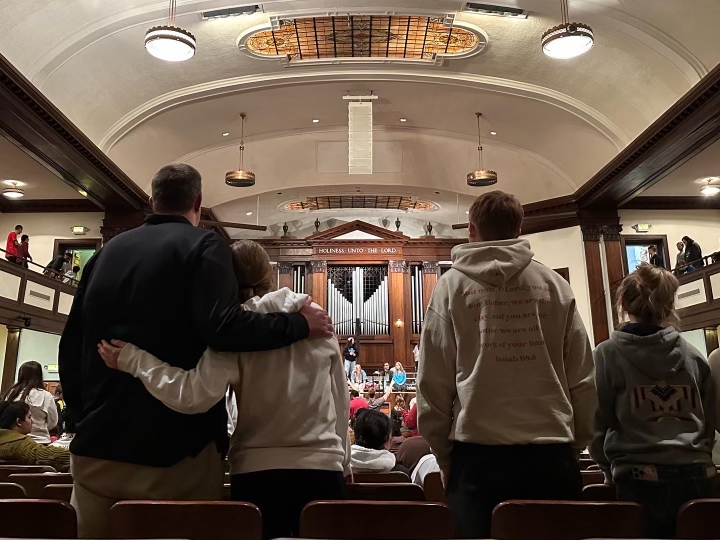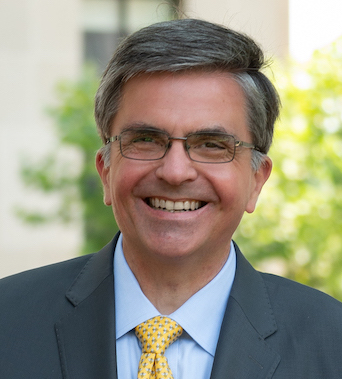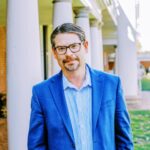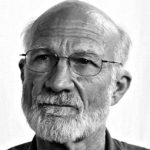Evangelicals have prayed for revival in America for decades. But do we know what to do when it happens?
It’s been nearly one year since the revival at Asbury University in central Kentucky began on February 8, 2023. The widely publicized revival brought 50,000-70,000 people to Wilmore, Kentucky, population 6000, overwhelming the infrastructure of a small community. Sadly, school authorities were obligated to shut it down after nearly continuous worship, night and day, across over two weeks. It began in the university auditorium after a routine chapel service when students declined to leave, gaining national attention, and attracting visitors from around the world.
Asbury Theological Seminary across the street, a separate institution with common Methodist Holiness roots, opened its own chapel, auditorium, and gymnasium to accommodate the crowds. At one point, the main road into crowded Wilmore was closed to traffic. The worship was Methodist in spirit, which means simple, earnest, and non-flamboyant. Students and other worshippers sang hymns, prayed, shared testimonies, and confessed sins.
One Asbury Seminary professor recounted his brief visit to the university auditorium, citing a great sense of serenity. He could have stayed for hours, he said. But like the woman healed by the mere touch of Jesus’s garment, as he described it, he felt whole and left contentedly after 90 minutes.
I was in Wilmore not long after the revival, attending the Wesleyan Theological Society. The revival’s embers were still warmly felt, and everyone spoke of it glowingly. The seminary president recounted that a Malaysian seminary student at Asbury had prayed years for revival. Back in Malaysia he sensed he should return to Wilmore, and in the Singapore airport he first learned of the revival. He surprised many when he entered the Asbury auditorium.
Wilmore is about sixty miles from Cane Ridge, a highpoint of the Second Great Awakening, originally hosted by Presbyterian clergy but attracting Methodists and Baptists, spawning the Restoration Movement now known as the Churches of Christ and Disciples of Christ. For a week, thousands worshipped amid shouts, groans, and falling to the ground in ecstasy over salvation or mortification over sin.
There was no equivalent drama at the Asbury Revival. The singing, prayers and testimonies were measured. The worship remained student led, but professors were often on the sidelines to assist, at times discouraging older people and visitors from taking center stage. There was no giant screen, pyrotechnics, or choreography. Other than electricity, heat and indoor plumbing, the technology for the Asbury Seminary was not much more advanced than at Cane Ridge 223 years ago.
But the tone at Asbury was decidedly less emotive, which makes a Wall Street Journal critique a little odd.
D.G. Hart recalled Mercersburg Seminary’s John Williamson Nevin, whose 1843 “The Anxious Bench” critiqued Charles Finney’s revivalism. Amid public hoopla, conversions could be faked, Nevin’s fretted. “What you see in a revival, he suggested, isn’t necessarily what you get,” Hart noted, asking. “Revivalism may produce some good, too, but can it be a mass vehicle for spiritual exhibitionism? Probably.”
Hart also asked if the “emotional highs of revivals” can “endure the disappointments of life?” Perhaps, echoing Nevins, “slow, steady growth in faith…is a more reliable path to Christian maturity?” Hart lamented: “The most fervent proponents of revivalism won’t appreciate these queries.”
Few if any at Asbury or in the wider Methodist world would resent these questions. Asbury Revival participants typically report encouragement and peace, not “emotional highs.” Students from many Christian backgrounds attend Asbury University and Asbury Seminary. But both emerged from the Wesleyan Holiness movement, which emphasized the primacy of sanctification and perfection in Methodist spirituality.
For Wesleyan Holiness people, conversion, with or without “emotional highs,” is only the start of a Holy Spirit-led journey to greater closeness with God. John Wesley had his celebrated “conversion” at a Moravian meeting on Aldersgate Street in London, listening to Martin Luther‘s Preface to the Epistle to the Romans. Wesley’s heart was “strangely warmed,” as he recalled: “I felt I did trust in Christ, Christ alone, for salvation; and an assurance was given me that he had taken away my sins, even mine, and saved me from the law of sin and death.”
For Wesley and his theology, God worked through heart and head. Wesleyan spirituality is not so much about emotional highs but steady, methodical perseverance through divine grace. Any spirituality, even if practiced alone, can be faked. But Methodism, like all major Christians traditions, knows God sees the heart.
Hart, in his mild critique, accurately noted the Asbury Revival pleased many evangelicals for attracting favorable publicity, even from The New York Times. It also offered a counternarrative to supposedly relentless secularization. Anecdotally, the spirit of the Asbury Revival over the last year has spread globally through its many international participants, besides throughout the U.S. Hopefully a social scientist someday will try to quantify. Likely decades from now we will learn of new churches, and perhaps even new denominations or communities, that arose from the revival.
The Asbury Revival was a needed reminder that God often has surprises, and His redemptive work continues. Most of God’s redemptive work doesn’t occur dramatically at large public events. Mostly it unfolds quietly in the lives of believers. But occasional large, public outpourings are helpful reminders of the Gospel’s power.






Comment by Gary Bebop on January 26, 2024 at 3:07 pm
This article is fair and succinct, two qualities needed for understanding. The Asbury Revival should be positively viewed relative to the post-war revival that produced Billy Graham and Youth For Christ and so many other effective strategies. The motto of YFC was “Anchored to the Rock/Geared to the Times.” The motto intimated that YFC’s mission was focused on what God was doing at a particular historical hour.
Comment by David on January 26, 2024 at 5:22 pm
Jesus spoke disparagingly of those who engage in religious activities “before men to be noticed by them.” I see Asbury has had these “revivals” in 1905, 1908, 1921, 1950, 1958, 1970, 1992, and 2006. Some of the earlier events are definitely known to have been instigated by the school’s administration. I suppose such things are a way of being noticed.
Among Catholics, there can be a mania for apparitions of the Virgin Mary with people traveling great distances to the alleged site. Locally, we have Mary showing up in a park. The group that supports “pilgrimages” to the location has been condemned by the local bishop, yet they continue with people wearing distinctive clothing and setting up an elaborate display with statues, flowers, candles, etc. Events such as these have been around for a long time. The healing spring at Lourdes, France, has attracted thousands. It is noteworthy that it had to be shut down during Covid 19.
Comment by Salvatore Anthony Luiso on January 31, 2024 at 11:36 am
Thank you for this article.
I would like to know how many of those who participated in this event are affected by it now, and how.
For example: Were those who were encouraged by it last February still encouraged by it now, and, if so, how?
I would also like to know about what happened with respect to the other events at other American college campuses which were called “revivals” last February. How do they compare with what happened at Asbury University? Were they all truly alike as acts of God? Were one or more of them false imitations?
Comment by Richard Bell on January 31, 2024 at 4:27 pm
I and several others, baptized with the Holy Ghost and born again, were blessed by revival whose manifestation was our obedience to Christ. I watched all the video and am sure the professor who spoke was worried that this “revival” would not lead to obedience. And I wondered whether such “revival” would happen anywhere without musicians to give the kids music for singing and dancing.
Comment by Ruben Rivera on February 7, 2024 at 2:33 pm
As a long time educator, recently retired from a midwestern Christ-centered liberal arts university, I was happy to hear of the Asbury revival. I pray for revival and thanked God when it happened at Asbury. But as a historian of Christianity (focus, U.S. and Latin America), I must confess I was hoping that with the revival of individual hearts would come a community spirit to become peace-makers for the Kingdom of God, and thereby true children of God. Jesus said if you love those who love you, and do good to those who do good to you, what credit is that to you. Any sinner or non-believer can do that. I hoped a revival would address the horrifying spread of a tribal gospel of tribal grace and tribal goodness, of another gospel that seeks to make state kowtow to church, denying the separation even exists in the Constitution, another gospel addicted to a sort of political Manichaeism that sees only their side as good and the other side as evil (not just less human, but demonic), and in some cases ready for a dictator rather than four more years not just of Biden but any democrat whatsoever. I wish this was hyperbole. I can hear it now, “What about the extreme left?” That not a response. It’s deflection. I would think that a real revival that brings light to our sins — of prejudice, tribalism, double standards and more — would be evidenced not by saying, “What about those guys?” But rather says, “I will look at the log in my eye and stop obsessing the speck in others. Lord, please help me to show that following you makes all the difference in human relationships across all differences. Please help me to give the same grace, mercy, forgiveness and love that you gave to me, to the other, until there is no other, only a family of sinners all, joyously saved by grace alone. Praise God for the Asbury revival, truly. But I still await another.